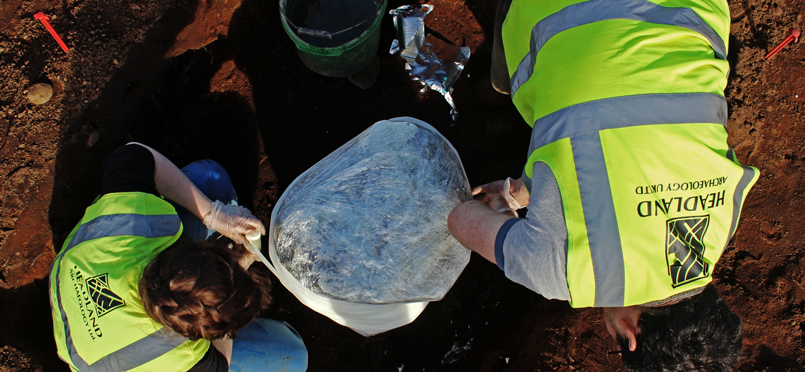
03 May Exciting Bronze Age Funerary Remains Discovered in Fortrose
A team of archaeologists from Headland Archaeology have discovered eight cremation burials and two short cists during recent excavations in Fortrose. The 3.6ha plot along Ness Road is to be the site of a new housing development by Tulloch Homes, who are funding the archaeological programme as part of a planning condition set by Highland Council.
Earlier phases of work had established the presence of Bronze Age funerary features and the recent excavation was designed to explore the full extent of this activity. The excavation was undertaken over eight weeks from January to March with a team of up to five archaeologists, headed by Project Officer Jürgen van Wessel. Over two hundred features of archaeological interest were found.
The Bronze Age which spans the period between around 2000 and 800 BC brought with it many changes, not only the advent of metalwork but also changes to burial practice. Cremation became a popular funerary rite, with the remains often interred within an urn before burial. The types of urns found at Fortrose are decorated with horizontal cordons which allow us to date them to the early Bronze Age, around 1900 – 1700 BC. Another common form of burial involved placing the human remains within a small stone built cist set into the ground. We know from pottery found within one of the Fortrose cists that it would have dated to between 2150 and 1750 BC.
The most significant and exciting discoveries were two intact cremation urns, buried side by side in a single pit and standing 0.35m high. They were carefully lifted by the team to be excavated under laboratory conditions. They were found at the edge of a concentration comprising three further urned cremations and two cremations buried without urns. The other three urns had all been heavily damaged by ploughing. A bronze object was recovered from inside one of the damaged urns and would have been placed upon the individual as a grave good before cremation.
The two short cists and one of the cremations were discovered at a different part of the site, north-east from the other burials. The cists were cut into the edge of a steep slope and lined with carefully placed stones. One of the cists contained an intact, highly decorated Food Vessel.



